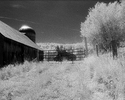multivoiced
Subscriber
A general discussion is welcome. In particular, I'm also interested in suggestions for M42- and F-mounts (because I happen to have a Pentax Spotmatic SP II and Nikon N75).
I'm curious to know of any suggestions for seeking out lenses exclusively for shooting with 400TX. The following comment got me thinking.
I sense a preference for character or emotion over technical perfection -- unless I am misinterpreting -- which I easily relate to. What other options are worth considering? Can words describe the effect of using old lenses, or at least old lens designs, as Jepsen stated?
I'm curious to know of any suggestions for seeking out lenses exclusively for shooting with 400TX. The following comment got me thinking.
if there was only one film I would shoot people with Tri-X using a mid century optic like a Summicron or Minolta 58/1.2. Need more sharpness than go up in format.
I sense a preference for character or emotion over technical perfection -- unless I am misinterpreting -- which I easily relate to. What other options are worth considering? Can words describe the effect of using old lenses, or at least old lens designs, as Jepsen stated?





